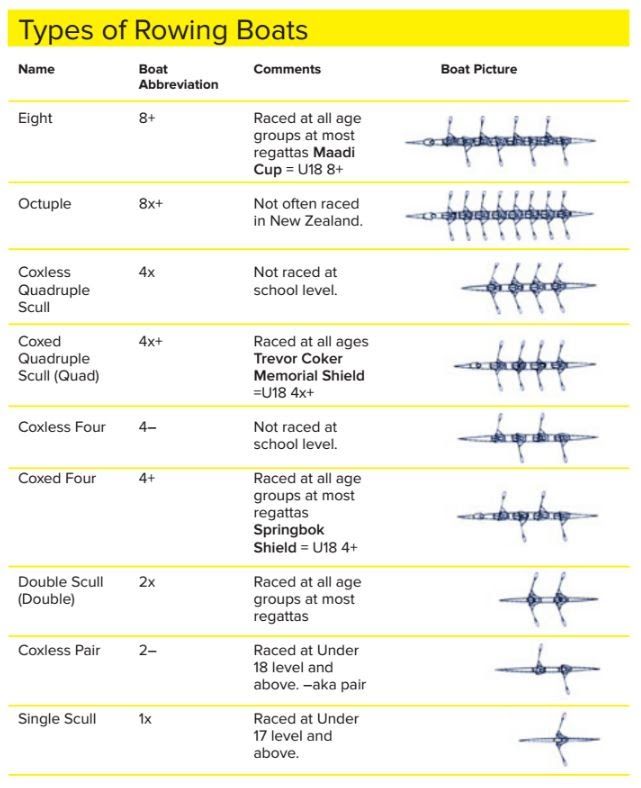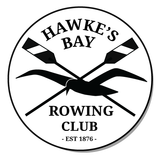Are you confused about all of the rowing jargon?
Rowing has a language of its own
If you're finding the jargon a bit much, don't worry. Here's a straightforward guide to help you out.
TERMS TO KNOW
THE SPORT
Sweep rowing vs. sculling: The two disciplines in the sport of Rowing. In sweep rowing, each rower holds only one oar (think of sweeping with a broom). In sculling, each rower holds two oars ('rowboat style').
Catch, Finish, Feather, Recovery: These are the different parts of a rowing stroke. The catch is when the blade enters, or catches, the water. The point at which the blade exits the water is called the finish. Feathering is when the blade is out of and moving parallel to the water on the way back to the catch. The rower “feathers” the blade after its extraction from the water, and then “squares” it up (bringing back to perpendicular) in between each stroke. The point between the extraction and the catch is called the recovery.
Leg Drive: Power applied to the stroke, at the catch, by the force of driving the legs down. Along with the hips, the legs are the main force behind pushing the oar through the water. The arms finish the stroke with a pull to the body as the legs are finishing.
Length in the Water: Term used to describe the length of arc the oar travels through the water. Taller rowers usually have a longer arc through the water - as speed equals force x distance, they usually can make a boat go faster if of equal ability with a shorter rower; hence most rowers are quite tall.
Let Her Run: A command used to stop rowing. The boat continues to run as the crew attempts to balance the oars off the water for as long as they can.
Rate: The number of strokes per minute being rowed by the crew. This usually varies from 42 to 48 on the start, 34 to 40 during the body and 40 to 44 at the finish. Smaller shells (fewer rowers) do not rate as high as the eight and the quad, the two highest rating shells.
Power 10:
A call for rowers to do 10 of their best, most powerful strokes. It’s a strategy used to pull ahead of a competitor.
Swing: The hard-to-define feeling when near-perfect synchronisation of motion occurs in the shell, enhancing the performance and speed.
Rush: The opposite of 'Swing.' When the rowers do not row in unity, thereby causing the boat to slow down.
Crab: (the dreaded "catching a crab") When an oar gets stuck in the water and either slows down or stops the boat.
Backing: Reversing the boat, by rowing backwards, but the rowers move forward!
Easy: Command used by many international crews to mean stop rowing. If the coxswain wants the crew to row "easy," he or she uses the terms row light or paddle.
THE EQUIPMENT
Shell: The boat. You can have an 8, 4 or 2 person shell
4+ or 8+: The number refers to how many seats are in a shell. The + indicates that there is a coxswain in the shell.
Gunwales: (pronounced “gunnels”): The top rim of the shell. (If your rower says “the waves came over the gunwales,” well, then give them a hug and some hot chocolate).
Slide: The track on which the rowers' seats slide back and forth.
Stretcher or Foot-stretcher: Where the rower’s feet go. The stretcher consists of two inclined footrests that hold the rower’s shoes. Rowers get into the shell (boat) in socks because rowing shoes are bolted into the footrests and stay fixed to the boat.
Rigger: The large triangular protrusion on the side of the shell on which the oars are locked.
Gate: The lock that attaches the oars to the riggers.
Oar: Used to drive the boat forward: rowers do not use paddles. Oars are approximately 290cm for a scull oar and 376 for a sweep oar. This is measured from the tip of the handle to the end of the blade.
Blade: The part of the oar that dips in the water. Fun fact: Each school has a different design on the blade, which allows for easy identification during regattas.
Dumps: Collapsible, portable frames with straps on which the boat rests between races or during maintenance or washing.
SIDES OF THE BOAT: STROKESIDE vs. BOWSIDE
Strokeside: Looking at the boat from stern to bow, the left-hand side of the boat is called strokeside (i.e., as seen by the coxswain's view in an 8+ setup).
Bowside: Looking at the boat from stern to bow, tthe right-hand side of the boat is called bowside (i.e., as seen by the coxswain's view in an 8+ setup).
FRONT to BACK of the BOAT: BOW vs. STERN
Bow: The part of the boat that crosses the finish line first.
Bow Number: Each shell is assigned an identification number at a regatta. This is another way to identify a team’s boat. The number can be seen on the back of the 1 seat rower (aka “bow seat”).
Stern: The last part of the boat to cross the finish line.
THE POSITIONS IN THE BOAT (ROWERS + COXSWAIN)
Coxswain: ("Cox") The crew member who steers the shell and is the on-the-water coach for the crew, utilizing a piece of equipment called a "cox-box" (a headset/microphone linked to speakers inside the boat) — or just yelling really loudly during equipment failures. Coxswains do not row.
Stroke: The rower who sits closest to the stern (and to the coxswain in an 8+ setup) that all the other rowers in the boat sit behind. The stroke sets the rhythm for the boat; others behind him must follow his cadence.
Bow 4 or Bow Pair: Seats 1 thru 4 (bow 4) and seats 1 and 2 (bow pair).
Stern 4 or Stern Pair: Seats 5 thru 8 (stern 4) and seats 7 and 8 (stern pair). The "Stroke" (Seat 8) always is part of the Stern Pair.
OTHER TERMS TO KNOW
Erg: Short for ergometer. A stationary rowing machine.
Coxbox: A speaker system that runs through the boat and has a microphone so the coxswain does not have to yell.

